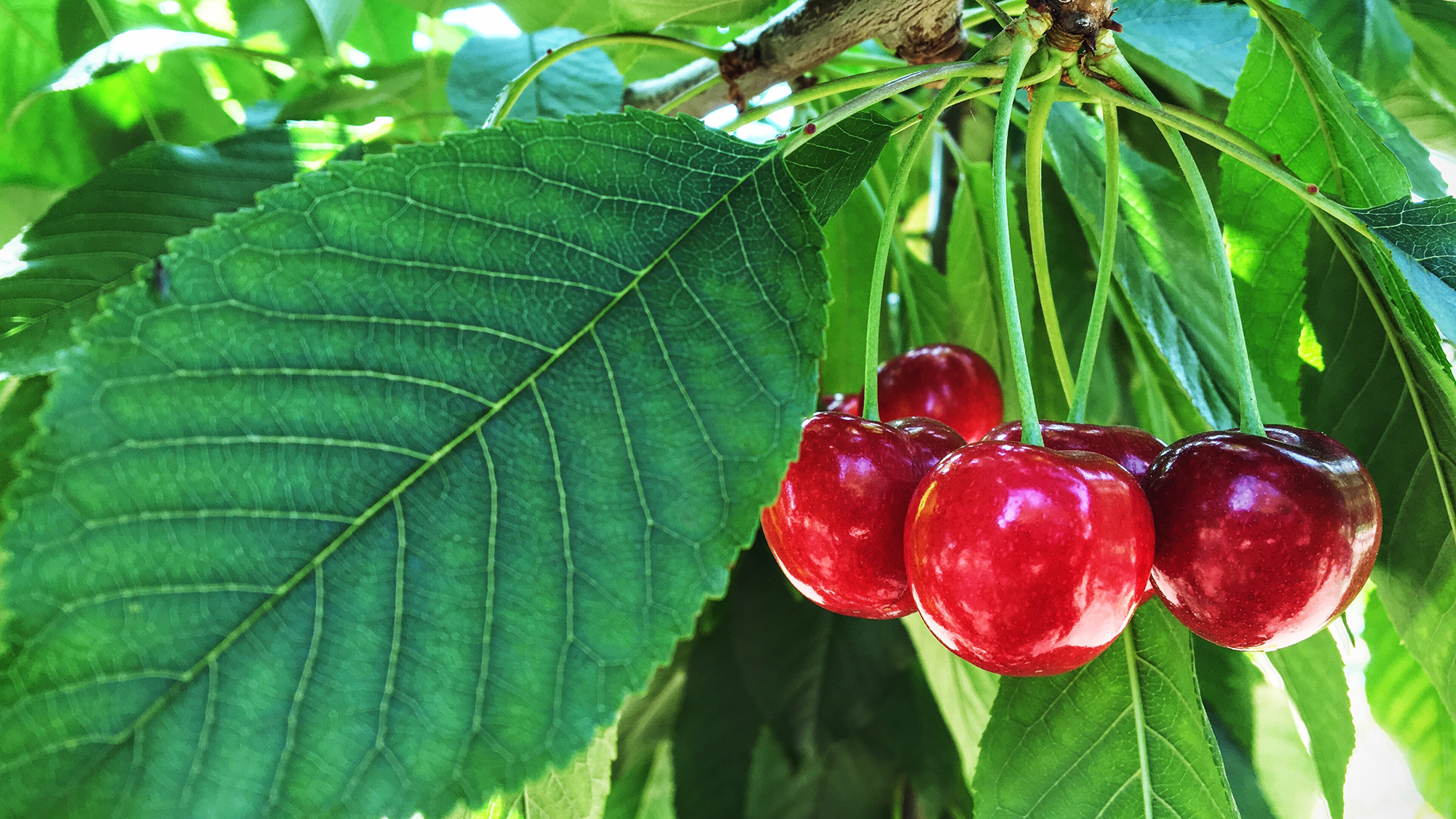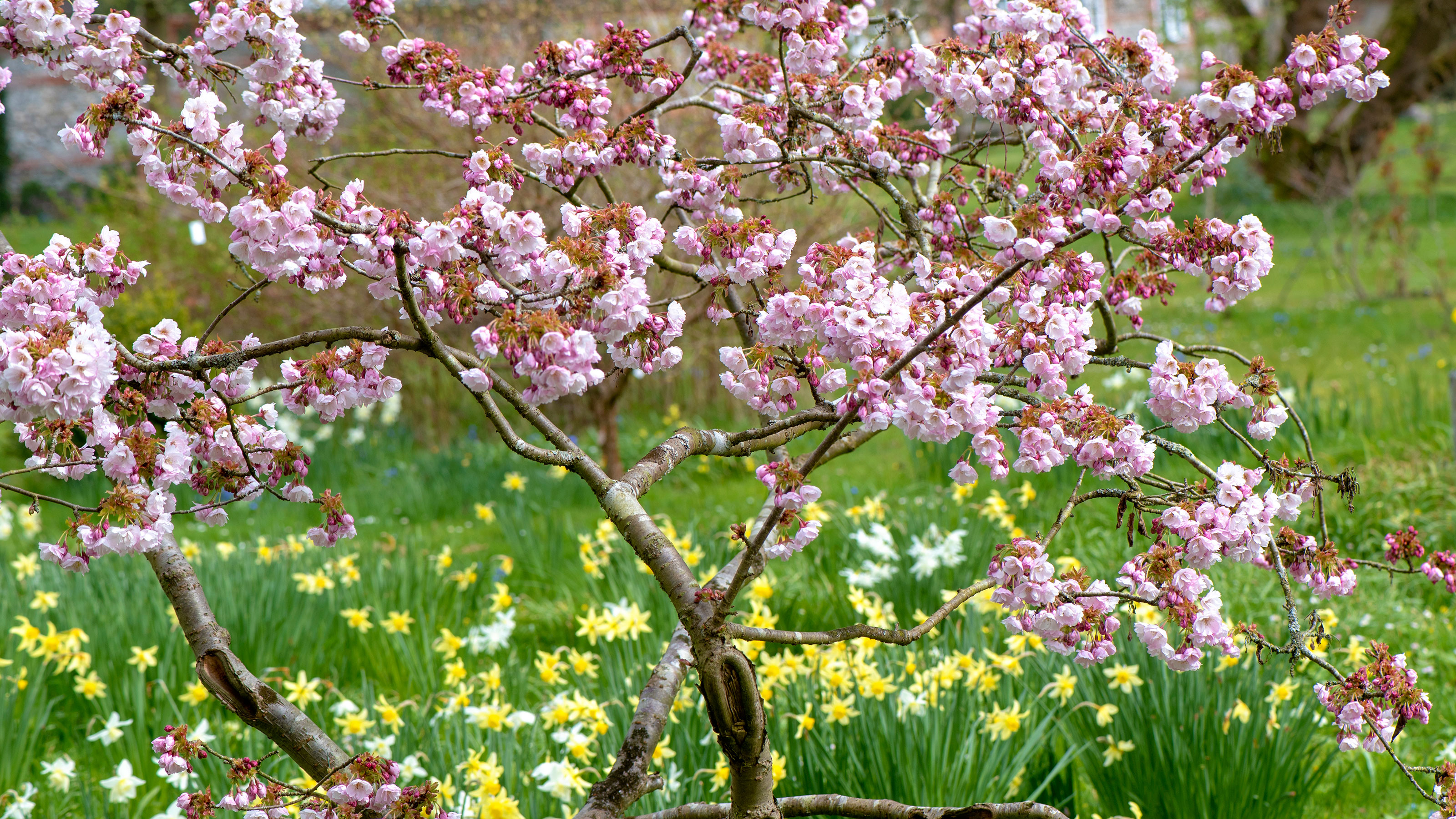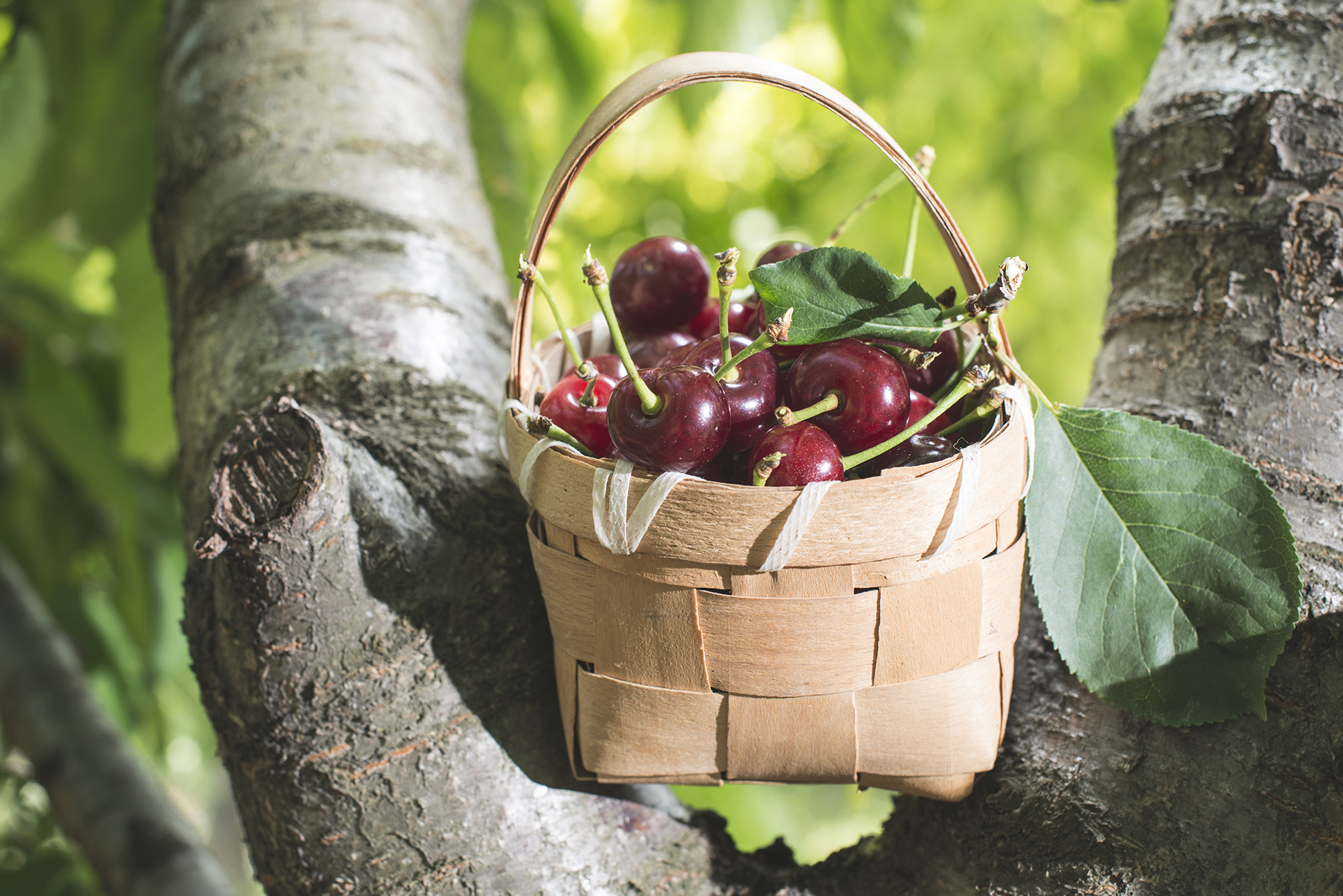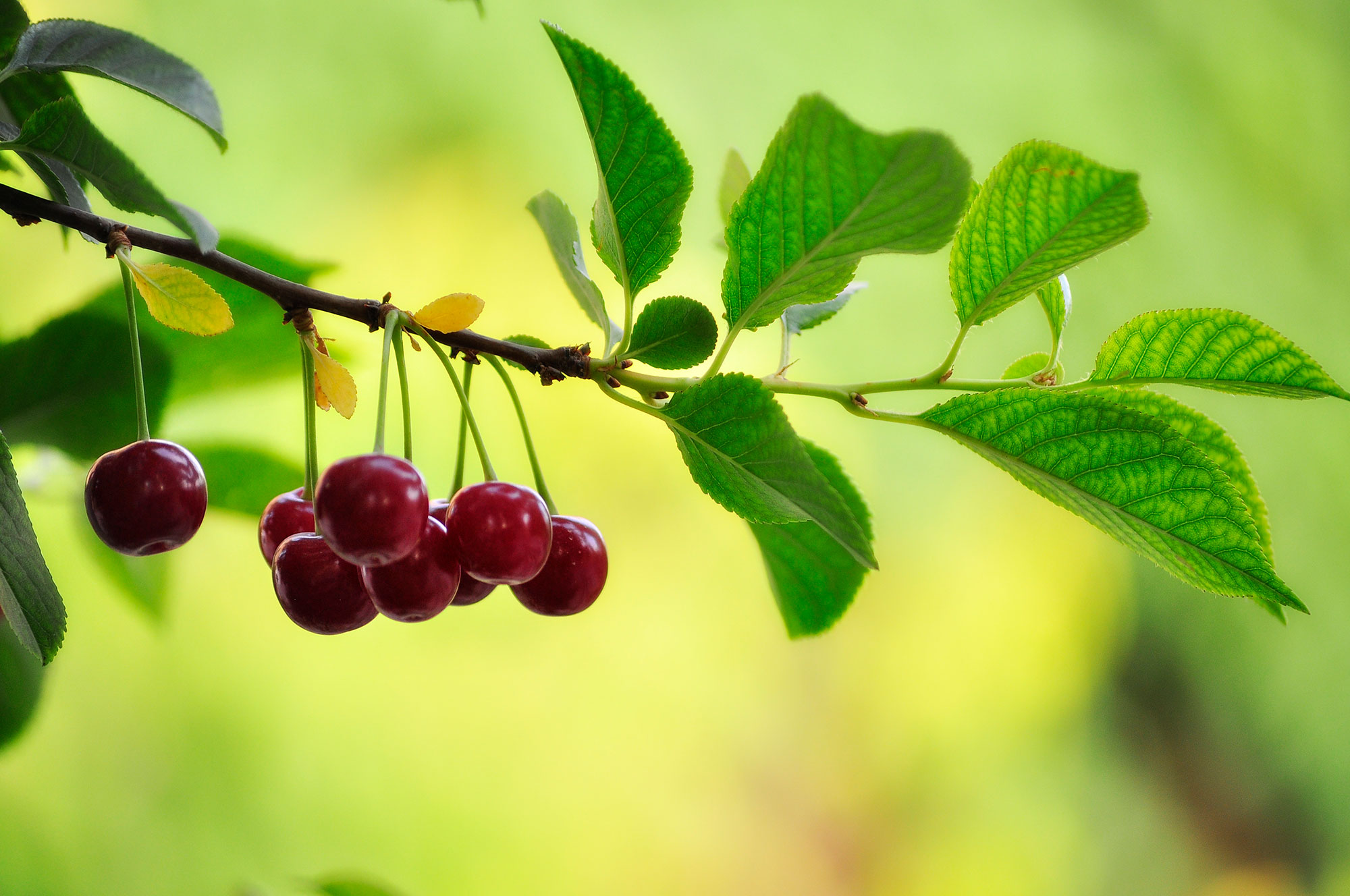How to plant cherry trees
Learn how to plant cherry trees in your garden for the sweetest home harvest


Knowing how to plant cherry trees the right way is essential for them thrive in your garden.
Delicious to graze on straight from the tree, cherries are such wonderful fruits to grow. They also produce the most magical blossom in the spring, so make sure to include at least one cherry tree in your backyard ideas.
'Cherry trees are one of the best fruit trees as they are low maintenance and easy to grow,’ says Tammy Sons, owner of Tennessee Nursery.
This makes them particularly well suited to beginners when planning a kitchen garden. So take the time to learn how to plant cherry trees properly, and you'll be on track for a bumper harvest.

How to plant cherry trees – step by step
Learning how to plant cherry trees is easy if you know how to plant fruit trees of other varieties. ‘It’s a very similar process,’ says Suzanne Fellows from Peaceful Valley Farm and Garden Supply.
Follow these simple rules, and you'll be planting your own backyard orchard in no time:
- Begin by digging the hole for your tree. ‘It needs to be about three times as wide as the tree’s roots and deep enough to allow planting at the same depth the tree was in the field,’ says Fellows. ‘Note the change in color on the trunk.’
- You can add some compost to the soil, but don’t overdo it. You must ensure this is mixed in with the soil outside of the hole, otherwise the roots will confine themselves to the planting area and the tree won't grow as strong.
- Place the tree in the planting hole. ‘Position the graft to the north, and don’t plant so deep that the graft will be covered in soil,’ adds Fellows.
- Backfill the hole using the same soil that was removed when you dug the hole. Firm it in with your feet, holding the tree in its upright position.
- ‘You need to stake the cherry tree at this point, so it will grow straight,’ says Tammy Sons, owner of Tennessee Nursery. Staking your tree will also minimize the risks from wind damage. Drive in a stake that comes up to a third of the height of the tree, and attach it with an adjustable tree tie.
- If you want to add a trellis to grow a cherry tree in a fan shape, it's best to get this in place now, choosing from the many vegetable garden trellis ideas available.
When to plant cherry trees
‘Cherry trees should be planted in the spring or fall because their roots are slow to establish and their leaf buds open early,’ says Pete Smith, urban forestry program manager at Arbor Day Foundation.
Choose a dry, mild day when the ground is not frozen. It’s important that there has not been a prolonged spell of dry weather, as the tree will need some moisture in the ground. However, the soil should not be waterlogged.
Where do cherry trees grow best?
‘Cherries need deep, fertile soil in a warm spot,’ says Period Living's gardening expert Leigh Clapp. ‘Sweet eating cherries need a sunny position; acid dessert varieties can be planted in shade against a wall.’
It’s also important to ensure your local climate is compatible with growing cherry trees – there are varieties suitable for hardiness zones 4-9, so check the USDA plant hardiness zone map to find out your zone.

How to care for cherry trees
'Planting depth, regular waterings, sunlight exposure and protection from harmful pests, animals and mowers, are key to getting a cherry tree to survive and thrive,’ says Smith.
‘It’s vital to water regularly so the fruit develops evenly,’ adds Clapp. You can water up to twice a day for the first week after planting, then daily for the next few weeks to help the tree become established.
Mulching cherry trees with compost once a year in the early spring will ensure they have the nutrients they need to flourish.
It’s also vital to know how to prune a cherry tree correctly.
‘Aim to create an open goblet shape in free-standing trees, removing the 4Ds – dead, dying, diseased and duplicate stems – and any further stems required to maintain a good structure, but leaving plenty of wood that is at least one year old, for this is where the fruit is borne,’ says Holly Farrell, author of The Jam Maker’s Garden.
‘Prune fan-trained trees to create and maintain their fan shapes, tying in replacement stems where necessary and shortening and thinning out laterals to keep growth in check while still retaining plenty of fruiting wood.’
You can harvest your cherries once the fruit has developed to a dark red or black, and feels slightly soft.
Best cherry trees to plant
There are hundreds of cherry tree varieties to choose from. Decide whether you want sweet or sour (acid) cherries. ‘Sweet varieties such as ‘Stella’ can be eaten fresh and are best for compote; ‘May Duke’ and the acid ‘Morello’ and ‘Montmorency’ are well-deserved classics for jam,’ says Farrell.
‘I recommend the 'Bing' cherry, which can provide as much as 50-100 pounds of cherries per year,’ adds Smith.
Bear in mind that not all cherry trees are self-fertile, so if you choose one requiring cross-pollination, then you'll need a second tree. Sour varieties tend to be self-fertile, while 'Sunburst' and 'Stella' are popular self-fertile sweet cherry trees.
You also need to take care to choose a suitable rootstock for the size you want to grow. Colt is a good choice for average-sized gardens and for fan training.
Gisela 5 is one of the most popular cherry tree rootstocks for smaller gardens and for growing in pots.
At the other end of the spectrum, FI21 produces a very tall cherry tree of up to 20ft – which is great for filling a large orchard, but the cherries will be more difficult to harvest.

Growing cherry trees in pots
Cherry trees are some the best trees to grow in pots, which makes them wonderful small garden ideas. However, you will need to choose a dwarf variety, and it must be self-fertile if only growing one cherry tree.
You will need to choose a container with a capacity of around 25 litres, and fill it with a loam-based compost. Ensure the pot has drainage holes so that the roots don’t excessively soak in the water and rot.
Do I need 2 cherry trees to get fruit?
You will need two cherry trees to get fruit if you choose a variety that is not self-fertile – this is particularly the case with older, traditional varieties.
While planting more than one cherry tree is fine if you want to create a large orchard, beginner growers or those with small gardens should choose a reliable self-fertile variety to ensure a good crop – Stella is ideal.
If you choose cherry trees that require cross-pollination, then you need to plant them around 20 feet apart for large trees, and 6-8 feet apart for dwarf varieties.
How deep should you plant a cherry tree?
When deciding how deep you should plant a cherry tree, look at the grafting line as well as the color change on the trunk, from where it was previously planted.
‘You should plant the tree so that the graft line is 2-3 inches above the surface of the soil,’ says Sons.
Roughly, your hole will be as deep as the root ball.
How long does it take for a cherry tree to bear fruit?
How long a cherry tree will take to bear fruit depends largely on the root stock it was grown on, and how old the tree is when you plant it.
As a rough guide, you can expect some fruit within its first two years, but you won’t get a good crop for at least four years.
Sign up to the Homes & Gardens newsletter
Design expertise in your inbox – from inspiring decorating ideas and beautiful celebrity homes to practical gardening advice and shopping round-ups.

Melanie has worked in homes and gardens media for two decades. Having previously served as Editor on Period Living magazine, and worked on Homes & Gardens, Gardening Etc, Real Homes, and Homebuilding & Renovating, she is now focusing on her passion for gardening as a Senior Editor at Gardening Know How. As a keen home grower, Melanie has experimented with pretty much every type of vegetable at some point – with mixed results. Often it is the simplest things that elude you, which may explain why she just can't seem to master zucchinis.
-
 Kris Jenner's favorite air fryer, the Ninja Crispi, is the perfect small kitchen solution – it deserves a place on the most compact of countertops
Kris Jenner's favorite air fryer, the Ninja Crispi, is the perfect small kitchen solution – it deserves a place on the most compact of countertopsKris approves of this compact yet powerful air fryer, and so do our own kitchen appliance experts, praising it for its multifunctionality
By Hannah Ziegler Published
-
 Ina Garten's storage pantry is an insightful window into all of the best cookware used by the chef – and it's easy to recreate on your kitchen shelves from $48
Ina Garten's storage pantry is an insightful window into all of the best cookware used by the chef – and it's easy to recreate on your kitchen shelves from $48The beautiful dishware in The Barefoot Contessa's Hamptons pantry showcases the tools she uses most often to cook – this is exactly how you replicate it
By Sophie Edwards Published